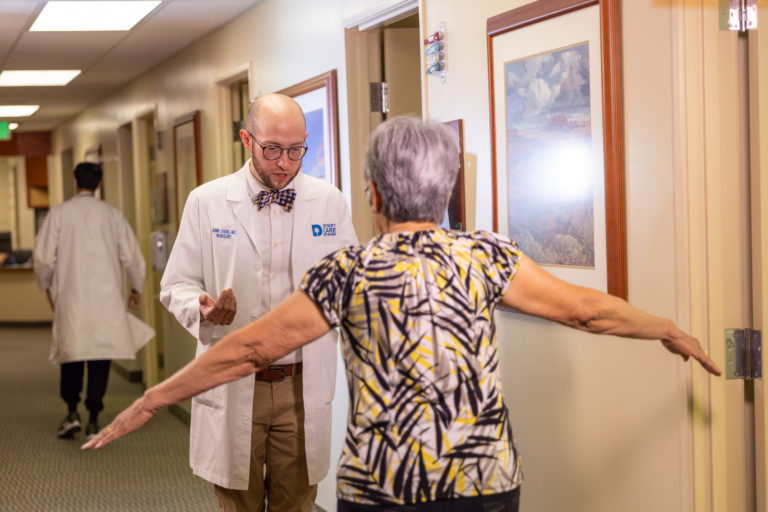Movement Disorders & Parkinson’s Disease
 Movement disorders are caused by a neurological condition prompting the abnormal movements of various parts of the body. These movements are usually involuntary.
There is also such a thing as a functional movement disorder that is not caused by neurological disease, but which exhibits similar characteristics to those that are. The following are a collection of neurological movement disorders and their characteristics.
Movement disorders are caused by a neurological condition prompting the abnormal movements of various parts of the body. These movements are usually involuntary.
There is also such a thing as a functional movement disorder that is not caused by neurological disease, but which exhibits similar characteristics to those that are. The following are a collection of neurological movement disorders and their characteristics.
- Cervical Dystonia – This is a rare neurological disorder that causes involuntary muscle contractions in the head and neck. There is no known cause. While there is no cure, there are treatments that can alleviate the symptoms.
- Huntington’s Disease – Very rare, this inherited condition causes nerve cells in the brain to break down. Symptoms include movement, cognitive, and psychiatric disorders. The movement difficulties include involuntary jerking and muscle problems.
- Ataxia – Incoordination, slurred speech, stumbling, and falling are all symptoms of this degenerative disease of the nervous system in which damage is caused to the cerebellum. It can affect people of all ages.
- Essential Tremor – This nervous system disorder is often mistaken for Parkinson’s disease. It results in the involuntary and rhythmic shaking of the hands.
- Lewy Body Dementia – This is the second most common form of progressive dementia after Alzheimer’s disease. Lewy bodies are protein deposits that develop in nerve cells, causing issues with thinking, memory, and movement.
- Tourette Syndrome – Characterized by repetitive motor tics and vocal tics, this disorder is usually diagnosed in children between the ages of 2 and 15. While there is no cure, several treatments are available, and it is common for symptoms to decrease with age.
Parkinson’s Disease
This is a progressive nervous system disorder in which nerve cells begin to gradually break down and die. Symptoms arise as a result of the loss of neurons that produce dopamine. This chemical is responsible for sending messages to your brain and without dopamine, individuals will experience abnormal brain activity, impaired movement, and other symptoms including:
- Shaking in Fingers & Hands
- Slowed Movements including Walking or Standing
- Muscle Rigidity
- Stooped Posture
- Balance Issues
- Loss of Automatic Movements – Blinking, Smiling, Arm Swinging
- Speech Impairment
- Difficulty Writing
The cause remains unknown although genetic factors and environmental triggers appear to play a role. There is no known cure. Many treatments are available that can help manage symptoms for a significant duration of time.
Deep Brain Stimulation
For certain patients in whom medications are not working effectively or are causing side effects, one effective treatment option is deep brain This surgical procedure implants electrodes into specific areas of the brain. A thin wire connects these electrodes to a pacemaker-like device that is surgically placed into the chest. Every member of the medical team working with this Desert Care Network unit possess specialized training in Deep brain stimulation programming.
Schedule Your Appointment
Turn to the Desert Care Network to diagnose and treat movement disorder symptoms. Our enthusiastic staff are prepared to answer your questions and provide guidance and support every step of the way. Contact us to schedule an appointment.
